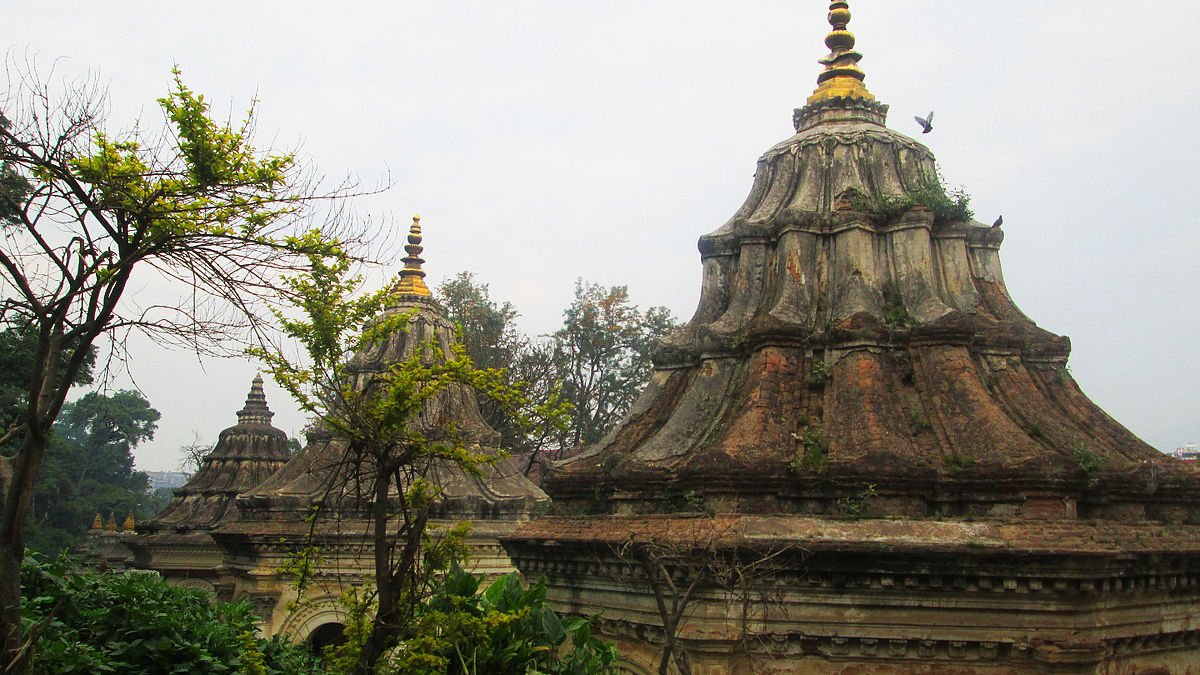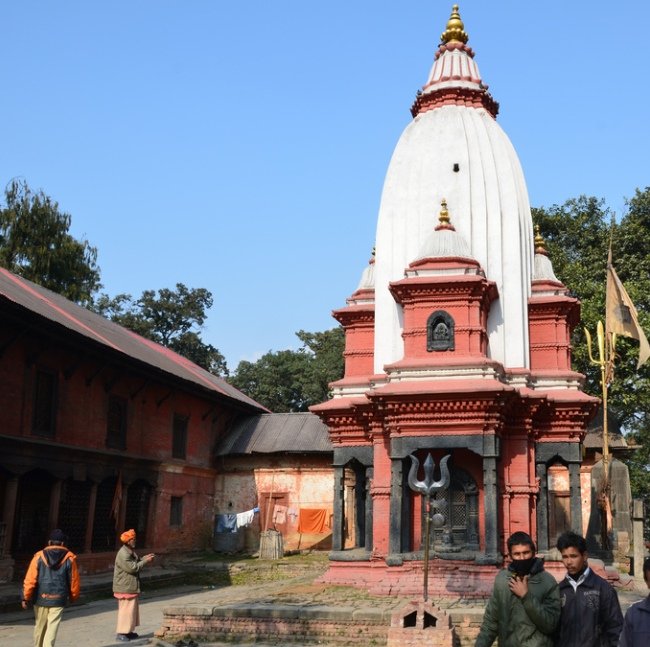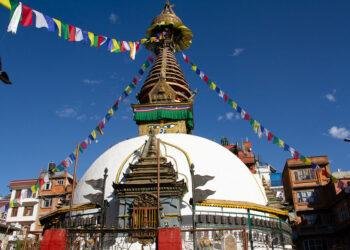Guhyeshwari Temple , also spelt Guheswari or Guhjeshwari, is one of the revered holy temples in Kathmandu, Nepal. This temple is dedicated to Adi Shakti. Pashupatinath temple is s very big temple complex of Lord Shiva located on the banks of the Bagmati River in the eastern part of Kathmandu. Guhyeshwari temple is also present in the same campus.
Shrine’s History
The mythology of Daksha Yaga and Sati’s self-immolation had immense significance in shaping the ancient Sanskrit literature and even had the impact on the culture of India. It led to the development of the concept of Shakti Peethas and thereby strengthening Shaktism. Enormous mythological stories in Puranas took the Daksha Yaga as the reason for its origin.The Guhyeshwari temple, dedicated to Sati Devi, Shiva’s first wife, was built by King Pratap Malla in the 17th century and is considered to be one of the sacred sites of Hinduism. When Shiva was insulted by his father in law, Sati Devi was so angry that she jumped into flames of yagya ( fire worship), an event which gave rise to the practice of Sati, or self-immolation.
Shiva was grief-stricken and picked up her corpse and began to wander about as her body parts fell to the earth. The temple marks the spot where her yoni fell; guhya means vagina and ishwari mean goddess. The goddess is worshipped at the centre of the temple in a kalasha (water jar) that is covered with a layer of silver and gold. The temple stands at the centre of a courtyard and is topped with four gilded snakes that support the final roof. Shakti Peethas are shrines or divine places of the Mother Goddess. These are places that are believed to have enshrined with the presence of Shakti due to the falling of body parts of the corpse of Sati Devi when Lord Shiva carried it and wandered throughout Aryavartha in sorrow.
There are 51 Shakti Peethas corresponding to the 51 letters of the Sanskrit alphabet. Each temple possesses shrines for Shakti and Kalabhairava. The Shakti is Mahashira and the Bhairava is Kapali. This temple is revered by Tantric practitioners and Tantric rites are performed in this temple. The temple is also mentioned in the Kali tantra, Chandi tantra, Shiva tantra Rahasya as one of the most important places for gaining the power of tantra. The Vishwasorup of goddess Guheshwori shows her as a many and different coloured headed goddess with innumerable hands. The temple gets much crowded during Dashain and Navaratri.


Shrine’s Map Location and How to Go There
Extra Information About this Shrine
During the Navratri festival, the King of Nepal accompanied by his families worships here after taking a holy bath in the river Bagmati. There are many beliefs related to the temple. It is believed that if a marriage takes place in the Guhyeshwari temple, the couples will be soul mates for another 6 birth. Sati (goddess) married Shiva and was reborn as Parvati on her next birth. Women worship in Guhyeshwari Temple to improve the health of their husband. Worship done here leads to victory over enemies.
Newar Vajrayana Buddhists consider Gujeshwori to be sacred to Vajrayogini in the form of Vajravarahi and to be the location of root of the mythical lotus upon which Swayambunath stupa rests, which is also the umbilical cord which nurtures Kathmandu. In Tibetan the place is called Pakmo Ngülchu (Varahi’s womb fluid) and the water which flows from the spring in the well in the temple is believed to be the sexual fluid of Vajravarahi.













































